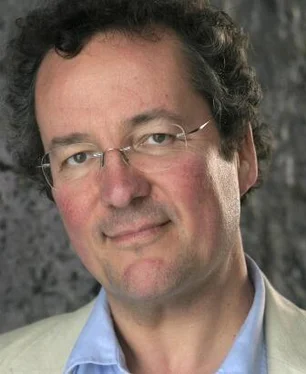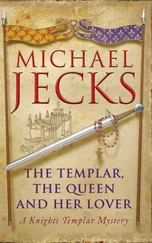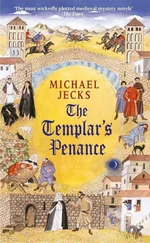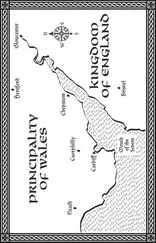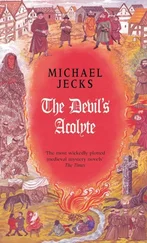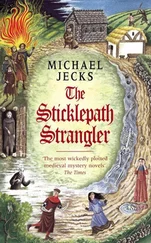Although the British have prided themselves on their system of justice over centuries, with the jury trial as the cornerstone of commonsense justice, in reality England was not unique in the 1300s. Our legal system was founded upon the same principles as other European states because we all came from pretty much the same roots: the Roman system. The real difference was that at this time, both the English and European systems were in a state of flux. Trial by ordeal had petered out, which meant that new means of testing people must be invented. This led to more investigations in which the judge and lawyers were actively questioning witnesses to get to the truth.
In the 1460s an exiled former Chief Justice called Sir John Fortescue wrote ‘In praise of the Laws of England’. It was a piece which attempted to demonstrate the superiority of the English system over the French model. According to Trevor Dean in his excellent book Crime in Medieval Europe , Fortescue presented ‘the English system of trial by jury as a guarantee of impartiality and truth’. Logically, Sir John said, a juror is safer than a mere witness called before a judge. A juror has money, land and status. A Frenchman need only acquire a companion who would invent a plausible story with him and, if they perjured themselves, an innocent man could be arrested and thrown into gaol. This, Sir John thought, was ‘wicked’. The idea that a judge could also use torture, he said, was ‘a pathway to hell’.
It goes to reinforce the view that in England ‘everyone is innocent until proven guilty’. Sadly, all too often this is not true, especially now, with rafts of new laws being brought into being with little debate. In many cases, British subjects can be assumed to be guilty unless or until they can prove their innocence. Even the ancient right to silence has been removed. Senior politicians have said that it is as bad to let one guilty person walk free as it is to wrongly imprison an innocent one. They advocate more emphasis on the feelings of the victims of crimes rather than on the ‘criminal’s’ protection.
But if you take away safeguards for some, it erodes the protection of all. There are too many cases of innocent men held in prison without parole because they refused to confess to their crimes and show suitable penitence. If they had admitted their guilt, they would have been eligible for parole, so if they had actually committed the crime of which they were accused, they would have been released much earlier! This is a dear injustice.
The concept that ‘it is better to let one guilty man go unpunished than to condemn an innocent man’ was not a smart, liberal Victorian invention; it was not even Fortescue’s. It is an ancient principle from Roman law, and was an argument recycled often enough by Roman lawyers. If anything, Fortescue took it from continental legal systems.
Now we come to my second theme, the different forms of warrior monk who existed during the fourteenth century.
In the early 1300s, the Templars were destroyed, of course, but that wasn’t the end of the various Orders. All through the age of the Kingdom of Jerusalem, Orders had sprung up in imitation of the Templars and the Hospitallers, with their own Rules and slightly pick’n’mix attitude to the more difficult commands. For example, the Knights of Santiago, who feature in this novel, were part of a very liberal Rule. Not only was consorting with women not frowned upon, but many freiles (Brothers) were married. On certain religious occasions they slept away from their women, but most of the year they lived happily as man and wife.
Warrior Knights – men prepared to fight for their beliefs – were essential in the religious Orders during the whole of the Reconquista – that period of reinvasion during which the Christians pushed the Moslem invaders of Spain and Portugal southwards until the Iberian peninsula became wholly Christian once more.
It was in 711 that Moslem troops crossed the Straits of Gibraltar and quickly spread throughout the whole of Spain and Portugal, apart from a few mountainsides in the north. It was only two years later that the Umaiyad caliph Abd al-Rahman appeared on the scene and forged this huge territory into ‘al-Andalus’. Yet although he and his successors ruled this land, five Christian kingdoms also sprang up: Aragon, Castile, Galicia, León and Navarre. In 1031 the caliphate broke up into smaller city-states, and now the reconquest began in earnest.
This is the main thing that a modern person must appreciate: the Orders were not a strange, foreign group of men. Yes, they were intensely religious, giving up their lives in battle for, as they saw it, the greater glory of God; but they were still ordinary human beings, with the same beliefs as the average man in the street at that time. The difference was, they were utterly dedicated to God.
The wars in which they fought were long and bloody, causing suffering over centuries to people living in Portugal and Spain.
The Moslems launched raids over the Tagus, stealing cattle, food, and of course people: the slave markets needed regular supplies of fresh blood. For hundreds of years families lost their sons, and women, their food stores and money. The fighting was unremitting and the raids characterised by religious fervour on both sides. When the thirteenth century faded into the fourteenth, the Portuguese had only recovered the Algarve fifty years before. Yes, the Moslems had been forced back, so that their sole remaining toehold was in Granada, but over the seas were hordes more waiting to be called. This was no theoretical war, it was a ferocious series of see-sawing battles.
In this climate the military Orders flourished – apart from during the inevitable reverses. It is astonishing how often religious rashness could overwhelm good strategic minds. For example, in 1280 Frey Gonzalo Rodgriguez Giron, the Maestre of Santiago, met a huge force of Moors. Most men, being outnumbered, would sensibly refuse to join battle, instead scouting around for reinforcements, but not a good Knight of Santiago. Like so many other religious warriors, Frey Gonzalo believed that if his faith was strong enough, pure enough, God would protect him and his men.
He charged, taking his little force of fifty-five knights with him. They were wiped out. Revealingly, a chronicler said that these were ‘most’ of the Brethren, which gives an insight into how few knights there were in some Orders. For this reason, King Afonso forced the Knights of Santiago to merge with the small Brotherhood, Santa María de España, which he himself had created a few years before.
There were knightly Orders of Calatrava, of Santiago, of Alcantara and Avis, amongst others. The Portuguese and Castilians were often at daggers drawn, trying to carve up the massive territory. One result was the dissolution of some Orders for political reasons. For instance, Santiago lost the Portuguese parts of its territories after pressure from King Dinis; the breakaway group became the Knights of São Thiago. Similarly the Portuguese elements of Calatrava became independent, at one memorable point demanding money before they would go to the support of their Brothers over the borders.
When the Templars were disbanded, their destruction led to two new Orders. On the ruins of the Temple there rose the new Aragonese Order of Montesa, an Order which kept the white tunic and red cross like the Templars. At the same time, King Dinis in Portugal decided that he didn’t agree with the Pope that the Templars’ property should all go straight to the Knights of St John. They were already powerful enough. Instead he created a new Order the Knights of Christ. This Order was to grow in importance and dominance for the nest few centuries, becoming the leading missionary and imperial Order in the Portuguese empire. For those who are interested in historical buildings, their monasteries and churches in the Romanesque, Manueline and Renaissance style are quite breathtaking.
Читать дальше
